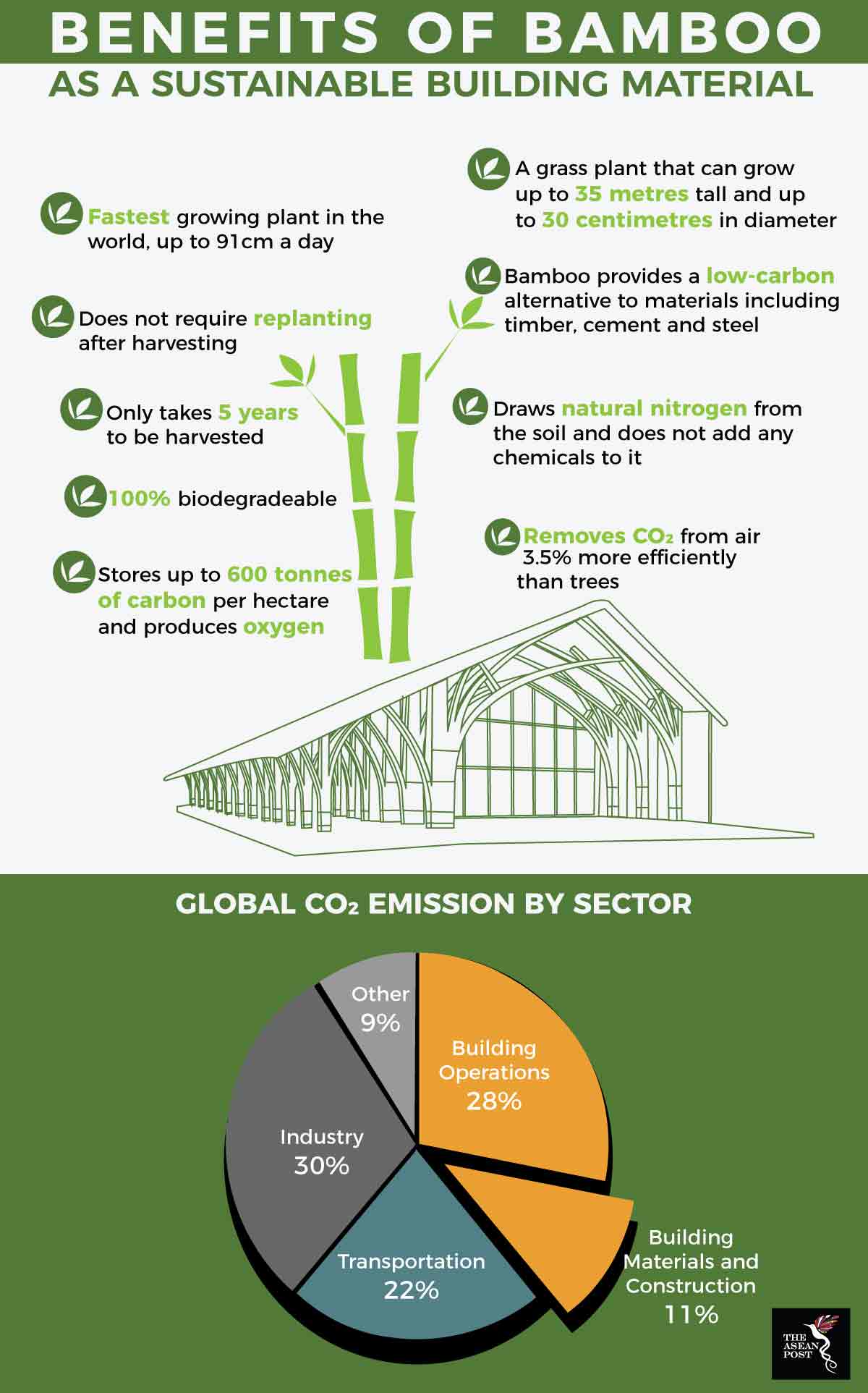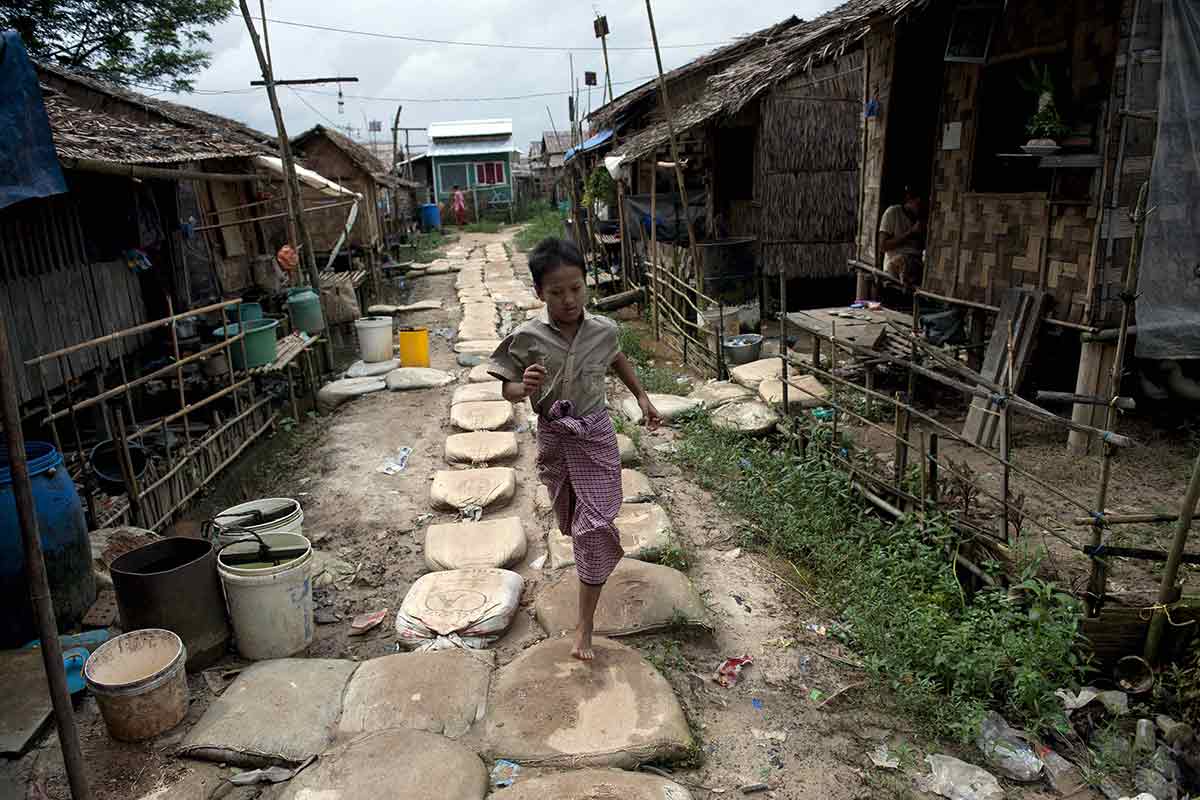The world has 11 years left, as reported by the Intergovernmental Panel on Climate Change (IPCC) to beef up its efforts to reduce global temperatures before it crosses the threshold leading to climate catastrophe. While ASEAN countries have expressed their joint commitment through national pledges to take action and fight climate change, they are also focusing on developing their nations as well. GlobalData’s lead economist for Construction Industry, Danny Richards, said that construction output among ASEAN member states will grow six percent annually over the next five years.
However, the building sector accounts for 39 percent of global carbon emissions, where 28 percent is from building operations (heating, cooling, lighting, etc.) and 11 percent is attributed to embodied-carbon emission which refers to carbon that is released during the construction process and material manufacturing. Cement and steel emit eight percent and nine percent, respectively of the total amount of greenhouse gas (GHG) emissions in the world.
Director of the World Green Building Council (World GBC), James Drinkwater, says that once a building of high-embodied-carbon emission is constructed, those emissions add to the total amount of carbon in the air. The construction sector can reduce carbon emission by using materials with low or no embodied carbon.
Architects too can play a part in this process with their creative designs. They can limit the environmental impact of the buildings they design by reducing GHG emissions. This can be done by innovating with technology and influencing the choice of materials used.
Bamboo as a mitigation strategy
The International Bamboo and Rattan Organisation (INBAR) suggests that bamboo can play a significant role in helping countries meet the United Nations’ (UN) sustainable development goals or SDGs and help combat the effects of climate change. Across Southeast Asia, bamboo architecture is growing in popularity and bamboo is fast becoming the material of choice for architects. Vo Trong Nghia, a Vietnamese architect has pledged to bring nature back into the urban environment through the use of sustainable materials, notably bamboo. Architecture is defining a new regional and local identity through projects using bamboo to demonstrate a sensitivity to the land, environment and culture.

The preference for bamboo is perhaps due to its availability and inherent strength. Bamboo comes from the botanical family of grasses that is resistant to tensile stress. The culm, a term for its thin and hollow stem and the tension resistant fibre within makes it easy to bend in extreme ways without breaking; making the material superior to timber and even comparable to steel. It grows faster than wood and under favourable conditions can have healthier, stronger and flexible culm. Though bamboo is designated as a material for low load bearing structures, it has the potential to replace steel in construction as evidenced by the construction of big span, multi-purpose halls and schools. In Chiang Mai, the Panyaden Bamboo Sports Hall has won multiple awards for the use of bamboo as a modern structural material.
The bamboo market strengthens local value chains in countries like Vietnam, Thailand and Indonesia. It also costs less than steel by weight and can provide affordable, resilient infrastructure to communities in the region.
However, bamboo does have a few weaknesses including vulnerability to attacks by fungus, swelling and shrinking behaviour, all of which can be overcome with coating and treatments. Bamboo fibre can be extracted and combined with other materials to create a composite. It can also be used in residential and commercial buildings, as either an accenting material or main structural component. Unfortunately, in some countries like Malaysia, its usage in urban areas still proves to be a challenge as local building codes and standards do not recognise bamboo as a proper building material, especially with regards to fire safety.
Bamboo’s capacity to absorb carbon emission from the atmosphere makes it a viable material of choice to reduce global warming. Unfortunately, the construction industry currently prefers using glass, steel and stone for materials instead. In the few years left for mankind to slow down global warming, choosing sustainable alternatives for construction materials could be critical.
Related articles:
